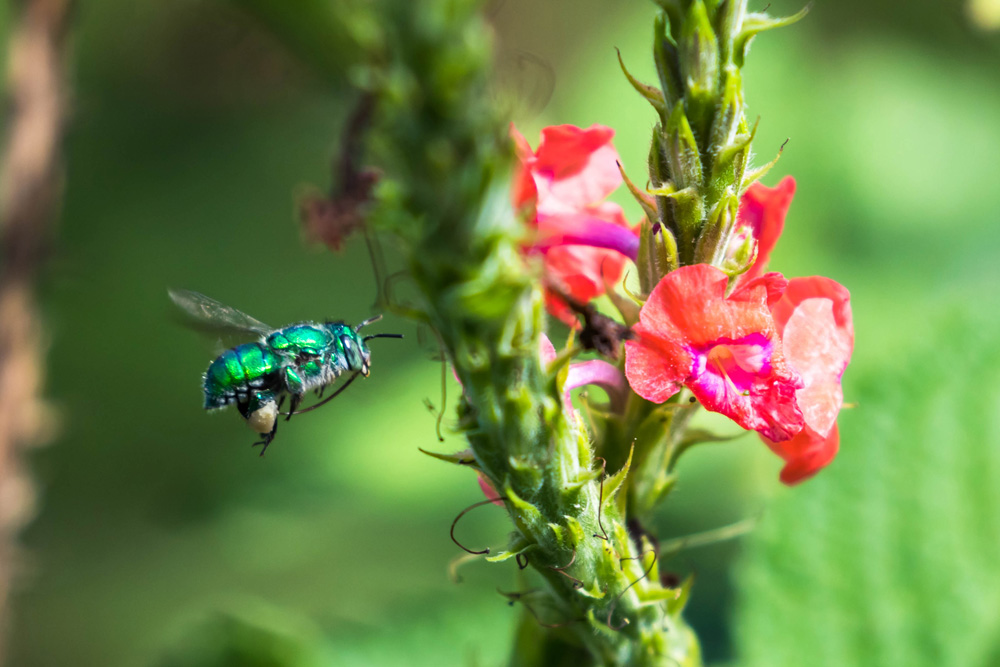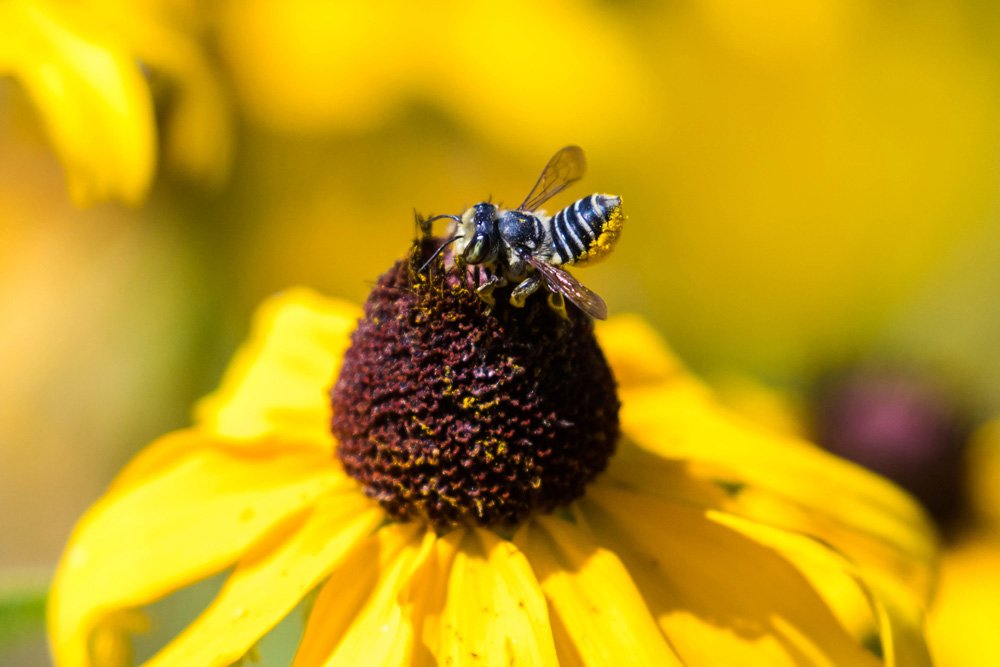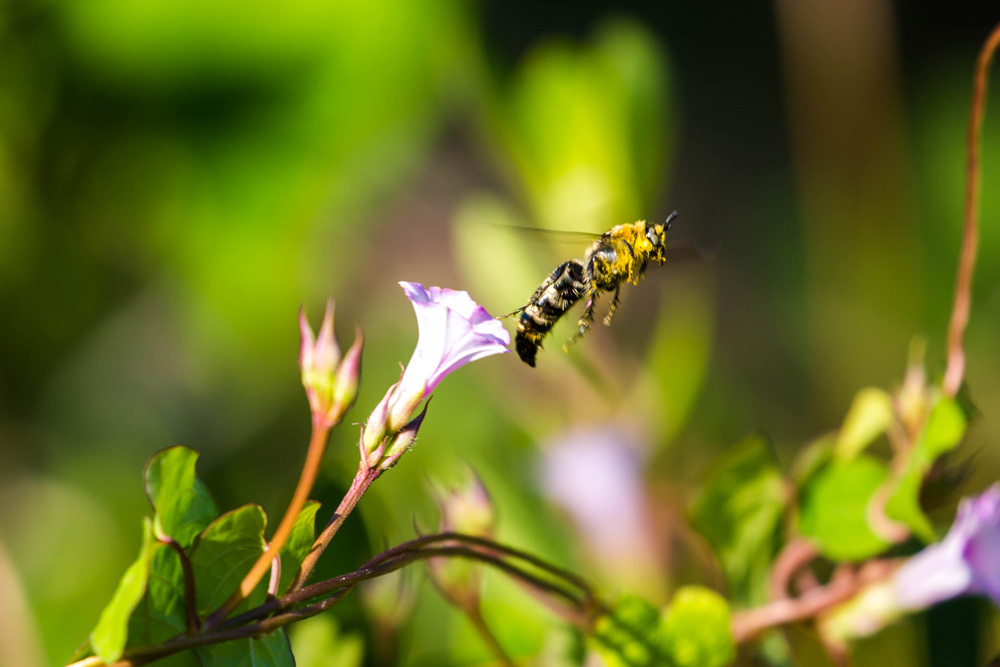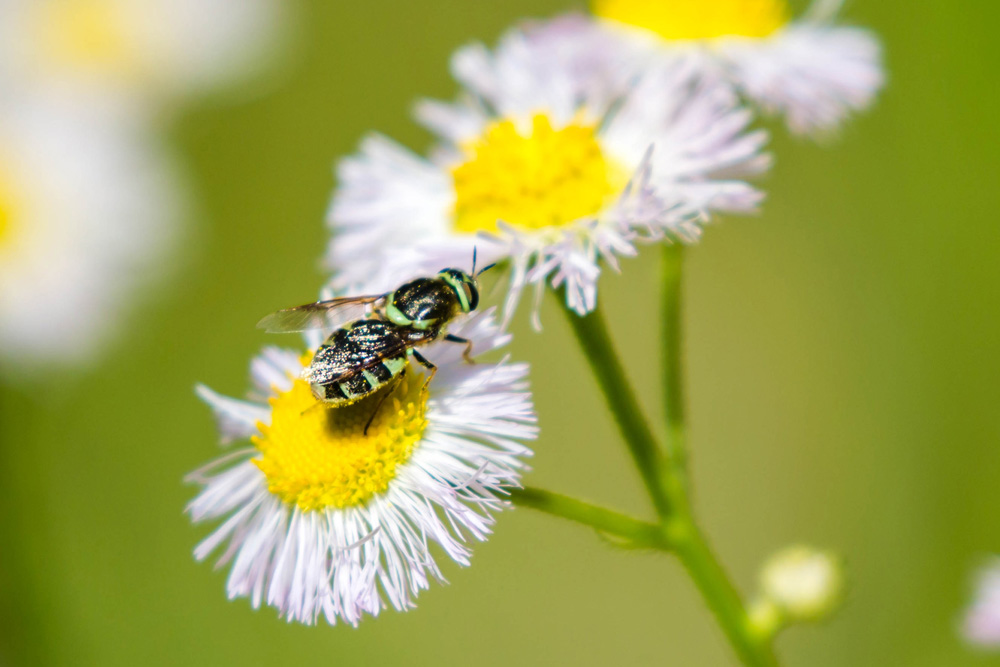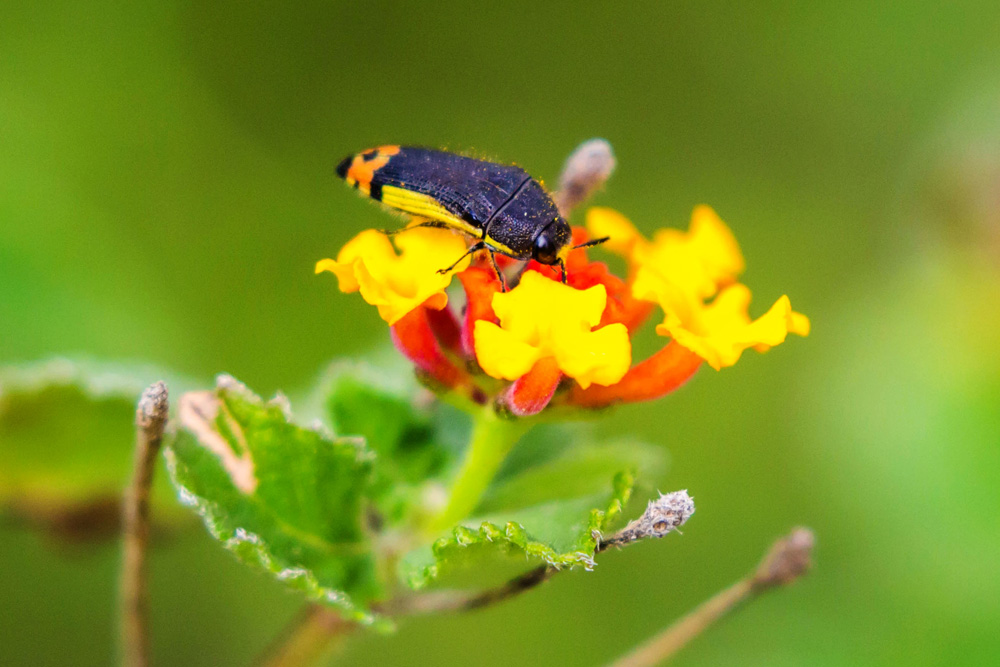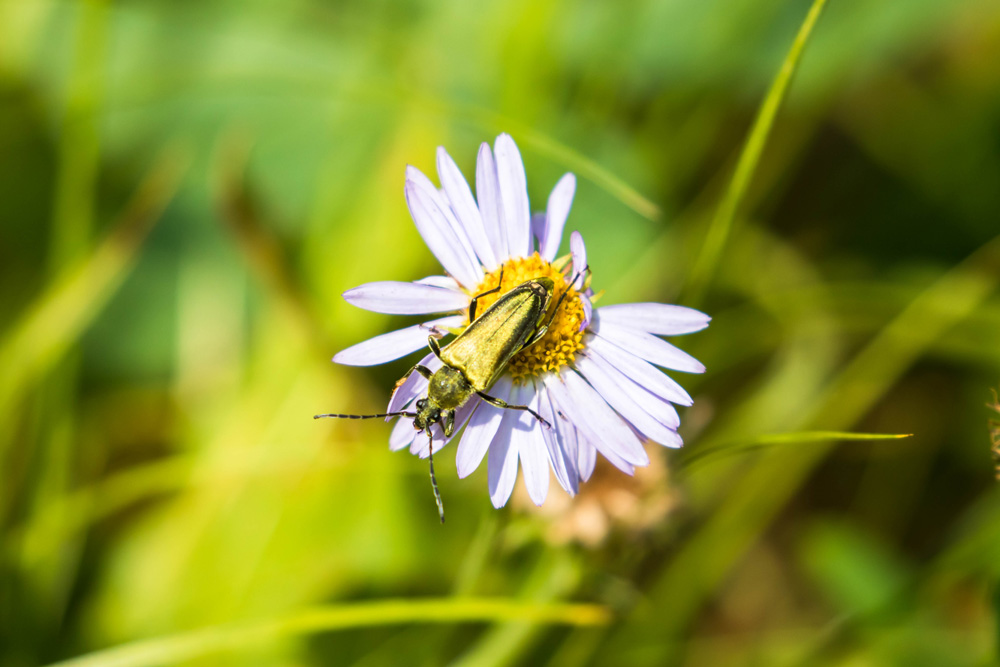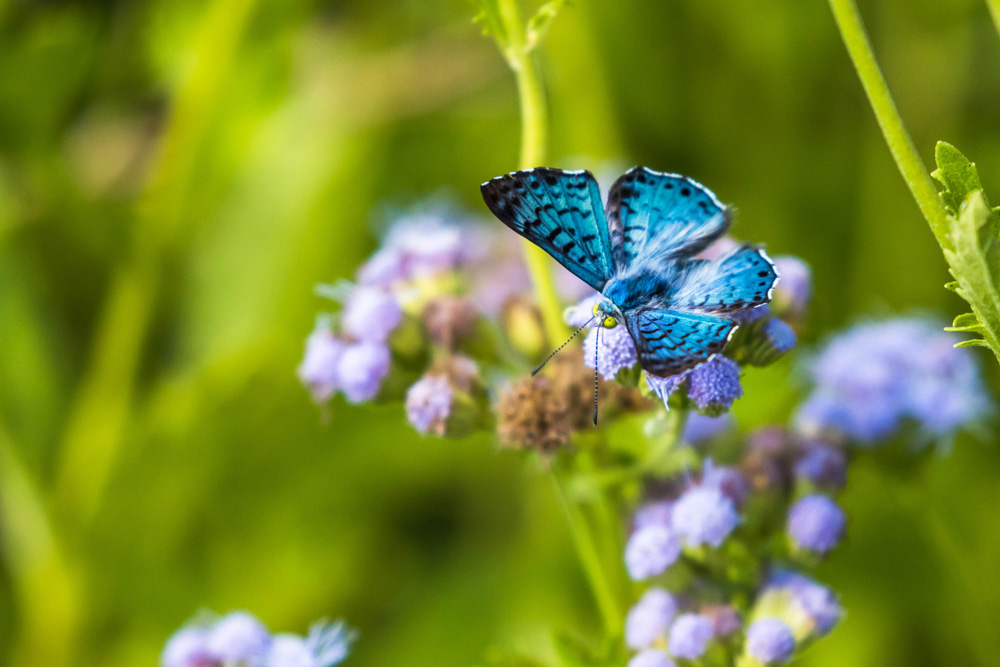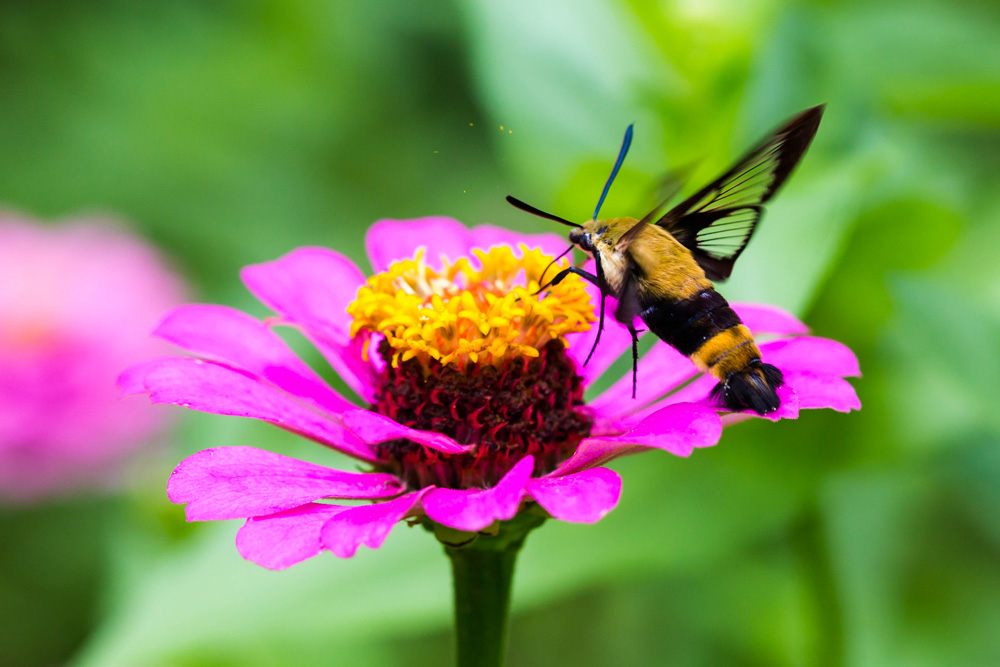NatureZen: Getting a Bit Dusty in Here
words and photos by Melissa McMasters
Pollen: it makes us sneeze, it makes our eyes water, it coats our clothes and hair and cars. We’ve probably all cursed this dusty substance at some point or another, particularly in the springtime. But pollen is also a big reason we’re alive in the first place. Pollen gives us flowers, and flowers give us fruits and vegetables to eat, timber for building, fuel for heating, and medicines to make us well.
But what exactly IS pollen? This powdery material is effectively a tiny male plant, containing a flower’s genetic information. Pollination is the process of getting this male organism into contact with a flower’s female reproductive organs. If this connection is successful, the pollen will produce sperm and deliver them to the flower’s egg, fertilizing it so the plant can produce new seeds.
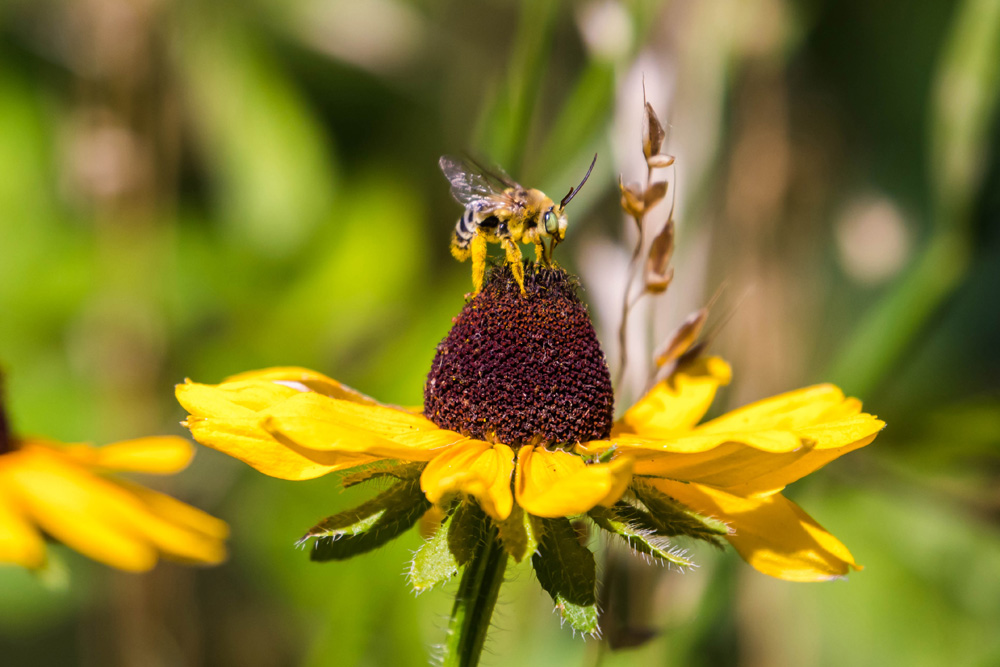
While flowers can be pollinated by wind or water (or in some cases, by other flowers on the same plant), about 80% of pollination is animal-assisted. Birds, bats, and small mammals do some pollination, but most of this work is done by insects. Because flowers need the help of pollinators, they put on a show with colors, scents, nectar, and pollen to draw them in.
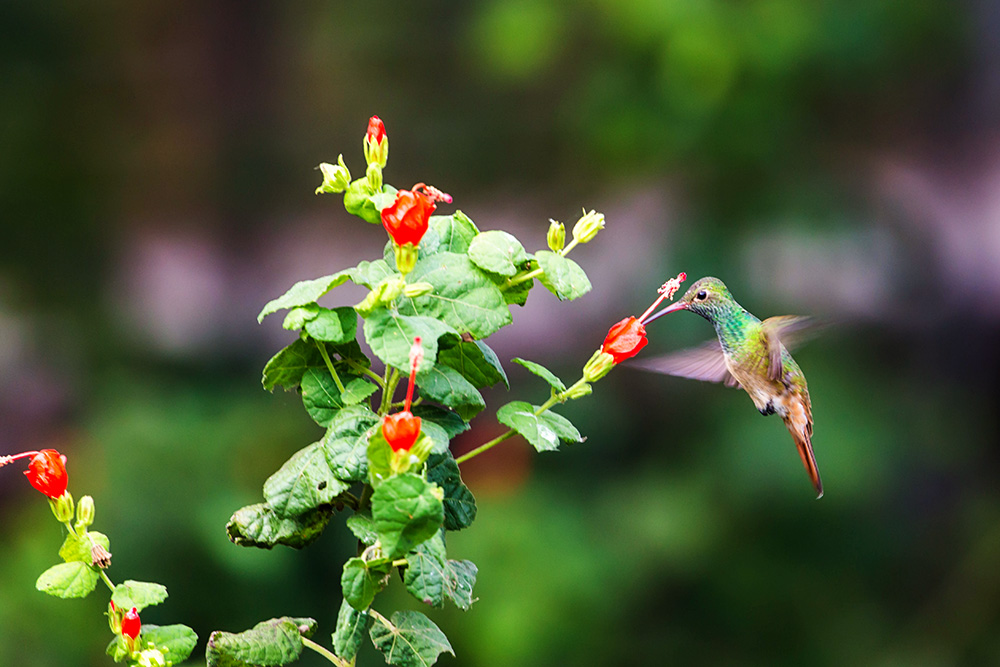
You’ve probably heard that pollinators are in major decline worldwide, due to widespread use of pesticides and herbicides, continuous loss of habitat, exposure to invasive pests and diseases, and the pressures of a rapidly changing climate. That’s why in 2006 the U.S. Senate created National Pollinator Week to help educate the public and improve the ecosystem for pollinators.
For our celebration of National Pollinator Week, here are some of our favorite pollinating insects doing what they do best: coating themselves in dust and bringing forth flowers in abundance.
Bees are generally considered the best pollinators for several reasons:
- The bodies of many species are covered in hair, which makes it easy for pollen to stick to them
- They often visit the same species of flower repeatedly while they’re feeding, which helps the pollen get to the right flower instead of another where it will be wasted
- Some bees have special parts of their anatomy designed for collecting pollen. From the bee’s perspective, it’s taking this food back to feed its young, but some of it inevitably brushes off as it visits the next flower.
This orchid bee is storing pollen in structures on her back legs, but it’s also coating her furry tum. (That is not the scientific term for a bee’s underside, so to compensate for my vocabulary choices, here’s a very intelligent look at the relationship between orchid bees and orchids.)
Like orchid bees, bumble bees (like this common Eastern bumble bee) store pollen in baskets on their hind legs. On average, bumble bees carry a mass of pollen weighing about 25% of their own body weight, but sometimes that figure can get as high as 75%!
Leafcutter bees store pollen under their abdomens. Do you see the difference between the bumble bee’s pollen, which she has wetted in order to stick to her, and the leafcutter bee’s, which is stored dry? Which arrangement do you think more effectively pollinates plants? (Think of it like the mud that’s stuck to your shoe: it brushes off more easily after it dries!)
While other insects lack the special pollen-carrying structures that bees have, some of them can still be very effective pollinators. This feather-legged scoliid wasp has fine hairs all over its body, and is completely covered in pollen it can transport to the next flower it visits.
Flies have just about as iffy a reputation as pollen does to someone with allergies. But the world of flies goes way beyond pesky houseguests or picnic crashers. Flower flies and soldier flies, like this one in the Hedriodiscus genus, visit flowers for nectar and spread pollen in the process.
Beetles can also be great pollinators! This yellow-margined flower buprestid is part of the family of jewel beetles, which are often brightly colored and iridescent. This particular species mimics a firefly, which discourages predators who are put off by the firefly’s bitter taste. From a distance, the beetle’s back end actually looks like the head of a firefly, so this is an insect with a “false face.”
Flower longhorn beetles, like this yellow velvet beetle, are a group of flower-visiting insects covered in fine hairs. As adults, they primarily consume pollen, but their larvae bore into dead and dying trees and digest wood and fungi for nutrients.
Finally, moths and butterflies are some of our showiest pollinators, although by and large they aren’t as effective as the preceding insects. Butterflies like this blue metalmark often perch well above the flower on long legs, and they often visit multiple species of flowers at a time. Still, pollen can stick to their bodies, so their nectaring does perform a service.
Moths tend to be hairier than butterflies, so they are considered more effective pollinators. In a lot of cases, it’s the moth’s proboscis that’s doing the work of pollinating, though. This snowberry clearwing is kicking up pollen as it drinks, and some of that will stick to its tongue and make it to the next flower.
Want to help pollinators in your neighborhood? You can make your yard a habitat! Check out these guides to pollinator-friendly plants by region (Memphis is in the Southeastern Mixed Forest zone). You can also help pollinators by supporting Overton Park Conservancy’s work to conserve the Old Forest State Natural Area, a haven for insects that specialize in pollinating woodland plants.
(Can’t get enough bee content? Check out this NatureZen post from last year about our local native bees.)

